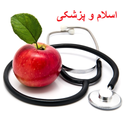- برنامهها
- Books & Reference
Islamic & medicine

| Install | <10 |
| از 0 رأی | ۰ |
| دستهبندی | Books & Reference |
| حجم | 2 MB |
| آخرین بروزرسانی | 2016 December 2 |

| Install | <10 |
| از 0 رأی | ۰ |
| دستهبندی | Books & Reference |
| حجم | 2 MB |
| آخرین بروزرسانی | 2016 December 2 |
تصاویر برنامه







معرفی برنامه
In the history of medicine, Islamic medicine, also known as "Arabic", "Greco-Arabic" or "Greco-Islamic" medicine – refers to the science of medicine developed in the Islamic Golden Age, and written in Arabic, the lingua franca of Islamic civilization.[1]
Beginning in the 7th century, Islam spread to a large part of the then-known world. Under the rule of the Islamic caliphs, people of various ethnic origins and religious beliefs lived together. Their common language of communication was Arabic, and the culture they created is called Islamic culture, even if it included Muslims, Jews, Christians and other religions alike, under the rule of Islam.[2]
The Islamic medicine has faithfully preserved, systematized and further developed the medical knowledge of the classical antiquity.[3]During the post-classical era, Islamic medicine was the most advanced in the world, integrating concepts of the ancient Greek, Roman,Persian as well as the ancient Indian traditions of Ayurveda. At the same time, the knowledge of the classical medicine was nearly lost to the medieval medicine of Western Europe, only to be regained by European physicians when they became familiar with Islamic medical authors during the Renaissance of the 12th century.[4]
The medieval Islamic physicians largely retained their authority until the rise of medicine as a part of the natural sciences, beginning with the Age of Enlightenment, nearly six hundred years after their textbooks were written. Many aspects of their writings are still worth reading even today,[5] and their memory is held in high respect by the physicians of today.
